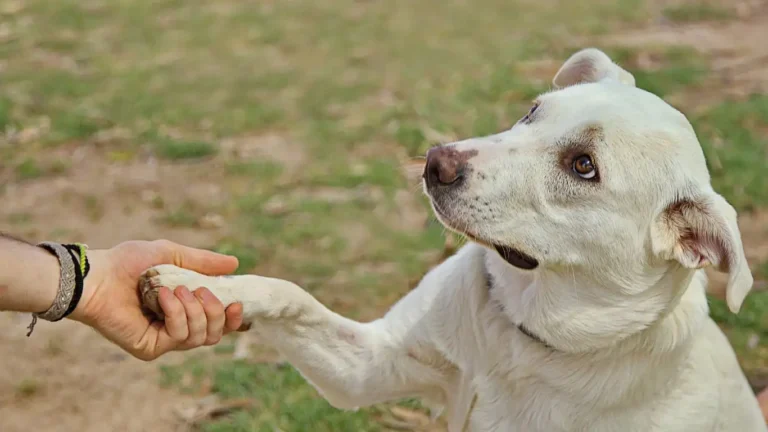What to Do If Your Dog Has a Seizure in Their Sleep: Stay Calm & Act Fast
If you’ve ever witnessed your dog having a seizure in their sleep, you know how alarming and confusing it can be. I’ve been there myself, working as a Veterinary Assistant with a focus on nutrition, and it’s a moment that stays with you. Seeing your pet convulsing and twitching can raise so many questions—what do I do next? Should I wake them up? Is this dangerous? Well, the truth is, seizures in dogs can happen for various reasons, and while they’re not uncommon, they can still be unsettling.
So, what exactly should you do if your dog has a seizure in their sleep? In this post, I’ll walk you through the steps you should take, and some of the things I’ve learned through my experience in veterinary care that might help you feel more prepared in such a stressful situation.
Understanding Seizures in Dogs: The Basics

Before jumping into what you should do, it’s important to understand what happens during a seizure. Seizures occur when there’s an abnormal electrical discharge in the brain, causing a sudden and uncontrolled movement or behavior in your dog. While they can be incredibly scary to witness, they’re usually brief and may not always indicate a life-threatening condition.
There are a few different types of seizures that dogs can experience:
- Generalized seizures (Grand Mal) – These are the most noticeable and dramatic type, where your dog will lose control of their muscles and experience violent shaking or convulsing.
- Focal seizures (Partial seizures) – These are more subtle and may involve twitching or odd behavior in one area of the body, like the head, leg, or tail.
- Cluster seizures – When your dog experiences multiple seizures within a short time frame (usually 24 hours), this can be a more urgent situation that requires immediate veterinary attention.
- Idiopathic seizures – Sometimes, seizures have no obvious underlying cause, which is often the case in dogs with epilepsy.
Now, just because your dog has had a seizure, doesn’t automatically mean something is seriously wrong. But it’s definitely a red flag that needs attention. If your dog is having seizures regularly, that’s a sign it’s time to talk to your vet and possibly run some tests. But if your dog has a single seizure during their sleep, don’t panic just yet—it could be caused by a number of factors, such as stress, diet, or even genetics.
What to Do If Your Dog Has a Seizure in Their Sleep

1. Stay Calm and Assess the Situation
The first thing you need to do is stay calm. I know, easier said than done, but trust me, dogs are incredibly intuitive. They can pick up on your emotions, so if you panic, it could stress them out even more. Try to breathe and think clearly about what’s happening. If your dog is asleep and starts to twitch or shake suddenly, don’t jump to conclusions right away. Sometimes, they might be having a dream or going through REM sleep, and it could look like a seizure, but it’s not. The key difference here is that a seizure will cause your dog to lose control of their body, while dream-induced twitching usually doesn’t.
2. Safely Position Your Dog
If it’s clearly a seizure, your priority is making sure your dog is safe. Gently move any objects that could harm them away from their body, especially if they’re in an area with hard surfaces, furniture, or anything sharp. Keep them away from stairs or elevated spaces. You may need to guide them onto their side (if possible), as this can help prevent them from choking, especially if they start drooling or foaming at the mouth.
Now, during a seizure, you should never try to hold your dog down or stick your hands in their mouth, as this can be dangerous for both you and your dog. I know it might sound like a natural instinct to ‘help’ them somehow, but you really just need to let the seizure run its course while ensuring their safety. In my experience, it’s a tough thing to do, but it’s the safest approach.
3. Keep Track of the Seizure Duration
Time is of the essence when it comes to seizures. If the seizure lasts more than five minutes, it’s considered a medical emergency, and you should contact your vet or an emergency clinic immediately. If your dog has more than one seizure in a short period, or if they appear to have difficulty recovering between seizures, it could be a sign of a more serious issue.
Common Causes of Seizures During Sleep

Now that you know the immediate steps to take, it’s important to consider the causes of your dog’s seizure. While a one-off seizure might not be a huge concern, understanding why it happened is crucial. Here are some of the more common reasons dogs have seizures during sleep:
- Epilepsy – This is one of the most common causes of seizures in dogs, especially if they’re young or of certain breeds like Beagles, German Shepherds, or Labrador Retrievers.
- Low blood sugar – If your dog has diabetes or hasn’t eaten in a while, they may experience a drop in blood sugar that leads to seizures.
- Toxins – Certain substances, like chocolate, certain plants, or household chemicals, can trigger seizures in dogs.
- Brain tumors – Though less common, brain tumors can lead to seizures, especially in older dogs.
- Infections – Infections affecting the brain, such as canine distemper or tick-borne diseases, can result in seizures.
If your dog has experienced a seizure, it’s always a good idea to talk to your vet about the possible causes. They might want to run some tests, such as blood work, imaging, or even an EEG, to determine the root cause of the seizures and help you figure out the best treatment options.
When Should You Be Concerned About Your Dog’s Seizures?

Now that you know what to do during a seizure and some of the possible causes, it’s time to address the bigger question: when should you be seriously concerned about your dog’s seizures? It’s natural to feel worried after seeing your dog go through something so unsettling, but how do you know when it’s a sign of something more serious?
From my own experience working in veterinary care, I’ve seen many pet owners walk into the clinic unsure of whether their dog’s seizure is a one-off event or part of a bigger issue. There are certain things to watch out for that may require immediate action. Here are some key indicators that your dog’s seizures may need further investigation:
1. Seizures Are Frequent or Last More Than Five Minutes
One of the biggest red flags when it comes to seizures is frequency. If your dog has more than one seizure in a 24-hour period, this is considered a medical emergency. It’s not something you should wait on. A single seizure can sometimes be harmless, but multiple seizures or prolonged seizures (lasting more than five minutes) can indicate an underlying issue that needs prompt attention from a veterinarian.
I’ve had cases where clients weren’t sure whether the seizure was just a fluke, but once it happened more than once in a day, we immediately recommended further tests to rule out conditions like epilepsy or infections. The longer a seizure lasts, the greater the risk of brain damage, so don’t wait too long to seek help.
2. Recovery Takes Longer Than Usual
When the seizure ends, your dog should gradually return to normal within a few minutes. They may be disoriented or tired for a little while, but they should come out of it and act like their normal selves fairly quickly. If they’re taking longer to recover, or if they seem confused or disoriented for hours afterward, that could signal a more serious problem. It’s important to watch their recovery closely. If they seem lethargic or have difficulty walking or balancing after a seizure, it’s a good idea to get them checked out.
3. Your Dog Experiences Seizures During the Day, Not Just at Night
Seizures that happen only during sleep are sometimes considered less concerning. But if your dog is having seizures during the day, especially when they are active, it’s something that requires more attention. Dogs with daytime seizures are often more at risk of getting hurt during the episode. Also, if they happen in the middle of normal daily activities, it’s a sign that their condition may not be as benign as you’d hope.
4. Behavioral Changes After the Seizure
Another thing to be aware of is changes in your dog’s behavior after they have a seizure. If you notice sudden, unexplained behavioral changes, like aggression, confusion, or withdrawal, it could point to something neurological that needs investigation. In my experience, these behavioral shifts are sometimes linked to things like brain injuries, tumors, or even conditions like canine cognitive dysfunction, so don’t ignore them.
5. Age and Breed Factors
Age and breed can play a big role in whether or not your dog’s seizures are a cause for concern. Some breeds are more prone to conditions like epilepsy, which can cause recurring seizures. Breeds like the Border Collie, Beagle, and German Shepherd are known to have a higher likelihood of epilepsy. As your dog ages, their risk for other neurological conditions like brain tumors or cognitive issues increases as well. If your dog is young and having their first seizure, the cause may be less serious, but if they’re older and having recurrent seizures, it’s more important to seek veterinary advice.
How to Monitor Your Dog After a Seizure

Once your dog has had a seizure, your work isn’t over yet. As a veterinary assistant, one of the things I encourage dog owners to do is keep a detailed log of their dog’s seizures. This record can be incredibly valuable when discussing the situation with your vet. Here’s how to keep track of things that could help your vet pinpoint the cause:
- Duration: Time the seizure from start to finish. If it lasts more than five minutes, get immediate medical help.
- Frequency: Make a note of how often the seizures occur. Are they happening in clusters or more than once a day?
- Signs Leading Up to the Seizure: Did you notice any unusual behavior beforehand? Some dogs show signs before a seizure, such as restlessness, drooling, or pacing.
- Post-Seizure Behavior: Write down how your dog behaves after the seizure. Are they dazed, confused, or unusually tired?
- Diet and Medication: Record what your dog has eaten and if they’re on any medications. Certain ingredients in food or changes in diet can sometimes trigger seizures.
Keeping these notes can make a big difference in understanding your dog’s seizure activity, and they can help your vet identify patterns that might point to an underlying cause.
Treatment Options for Dogs With Seizures

If your dog has been diagnosed with a condition that causes seizures, there are treatment options available to help manage the seizures and improve your dog’s quality of life. Here are some common treatment approaches:
1. Medications
For dogs with epilepsy or frequent seizures, your vet may prescribe anti-seizure medications. These can help control the frequency and severity of seizures, making life easier for both you and your dog. Some of the most commonly prescribed medications include Phenobarbital, Levetiracetam (Keppra), and Potassium Bromide. Keep in mind that medications often come with side effects, so it’s important to work closely with your vet to monitor their effectiveness and adjust dosages as needed.
2. Dietary Adjustments
As a veterinary assistant with a focus on nutrition, I can tell you that diet can play a significant role in managing seizures in some dogs. Some dogs benefit from special diets, like ketogenic diets, which are high in fat and low in carbohydrates. These diets have been shown to help reduce the frequency of seizures in some dogs. If your vet suspects that a nutritional imbalance is contributing to your dog’s seizures, they may suggest changes in their diet or supplementation with specific nutrients.
3. Surgery or Other Medical Interventions
In cases where a brain tumor, infection, or structural issue is identified as the cause of seizures, surgery may be an option. It’s less common, but sometimes removing a tumor or addressing the underlying issue surgically can help eliminate or reduce seizures. Infections that cause seizures may require antibiotics or other treatments to eliminate the source of the problem.
Remember, when it comes to treating seizures in dogs, every case is unique. The best course of action will depend on the underlying cause, the severity of the seizures, and how your dog responds to treatment.
How to Prevent Seizures in Dogs

Once you’ve dealt with your dog’s seizures and sought the necessary treatment, your next concern may be how to prevent them from happening again. While not all seizures can be prevented, especially if they’re linked to an underlying condition like epilepsy, there are still a number of steps you can take to reduce the frequency and severity of seizures in your dog.
As someone with experience working in veterinary care, I can tell you that prevention is often about consistency and making sure your dog has the right environment and care. Here are a few tips you can implement to help keep seizures at bay:
1. Stick to a Consistent Routine
Dogs thrive on routine, and a consistent schedule can help reduce stress and anxiety, which are common triggers for seizures. Try to feed your dog at the same time each day, take them for walks, and keep their environment as predictable as possible. I’ve seen firsthand how important this is, especially in dogs that suffer from seizures due to stress or changes in their environment.
2. Monitor Diet and Nutrition
As a Veterinary Assistant with a nutrition focus, I can’t stress enough how important diet is when it comes to managing your dog’s overall health. There are certain foods and ingredients that may trigger seizures, especially in dogs that are sensitive to certain additives or preservatives. Avoid feeding your dog table scraps, and try to stick to a high-quality, well-balanced dog food. If your dog has epilepsy or a history of seizures, it’s worth discussing a special diet with your vet, such as a low-carb or ketogenic diet, that may help reduce seizure frequency.
3. Avoid Known Toxins
Toxins are one of the most common causes of seizures in dogs, and it’s critical to keep them away from anything harmful. Common household items, such as chocolate, certain plants (like lilies and azaleas), and even some human medications can be toxic to dogs and trigger seizures. Always make sure that anything harmful is out of your dog’s reach. It’s also a good idea to regularly check your home for potential hazards and keep harmful substances safely stored away.
4. Keep Your Dog’s Stress Levels in Check
Stress is a big contributor to seizures in some dogs. Whether it’s due to separation anxiety, loud noises, or a change in environment, stress can trigger a seizure episode. If you notice your dog becoming anxious, try to identify the cause and remove it when possible. In some cases, a calming supplement or medication prescribed by your vet may help reduce anxiety and, in turn, lower the chances of a seizure. I’ve had clients whose dogs’ seizures were significantly reduced after they started using natural anxiety-relieving products, like pheromone diffusers or calming wraps.
5. Regular Veterinary Checkups
If your dog has a history of seizures, regular checkups with your vet are crucial. Even if your dog seems to be doing fine, your vet will want to monitor their health and make sure that any underlying issues are being addressed. In my experience, routine visits help catch any potential health concerns before they become bigger problems. Your vet will also be able to adjust any medications or treatments to better suit your dog’s needs over time.
What to Expect When You Take Your Dog to the Vet

If your dog has had a seizure, it’s important to schedule a vet appointment as soon as possible. Your vet will want to assess your dog’s health to determine the cause of the seizures and recommend an appropriate course of action. Here’s what you can expect during your visit:
1. A Thorough Physical Examination
Your vet will begin by performing a physical exam to check for any signs of illness, injury, or neurological problems. This may involve testing your dog’s reflexes, checking their heart and respiratory rate, and evaluating their overall health. Your vet may also ask about your dog’s medical history and any other symptoms you’ve noticed.
2. Blood Work and Other Diagnostics
In order to determine the cause of the seizures, your vet may recommend blood work to check for underlying conditions like low blood sugar, liver disease, or infections. They may also suggest imaging tests, such as X-rays or an MRI, to look for any brain abnormalities, such as tumors. These diagnostic tests can help rule out serious conditions and guide your vet in recommending the most effective treatment for your dog.
3. Medication and Treatment Plan
If your dog is diagnosed with epilepsy or another condition that causes seizures, your vet will likely prescribe medication to help control the seizures. The goal is to reduce the frequency and severity of the seizures while minimizing side effects. Your vet will also provide you with a detailed treatment plan and guidance on how to monitor your dog’s progress at home.
4. Follow-Up Appointments
After the initial consultation and treatment plan, your vet will want to monitor your dog’s progress through follow-up appointments. This allows them to adjust medications, check for any side effects, and make sure the seizures are under control. Depending on your dog’s condition, these appointments may be frequent at first but will taper off as your dog stabilizes.
References
For more information on seizures in dogs and how to manage them, I recommend checking out these reputable sources:
Disclaimer
While this article provides helpful information based on personal experience and veterinary knowledge, it is not intended to replace professional veterinary care. Always consult with a qualified veterinarian to address any health concerns about your dog. Seizures can be a symptom of various health conditions, and your vet will provide the most accurate diagnosis and treatment plan tailored to your pet’s specific needs.






